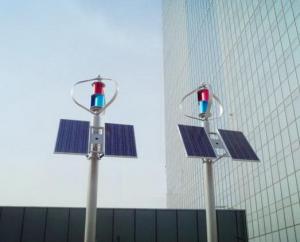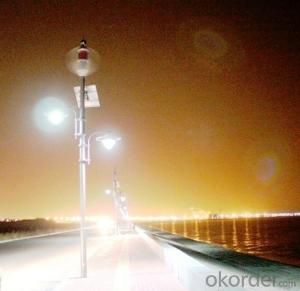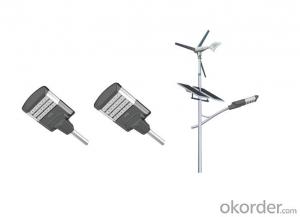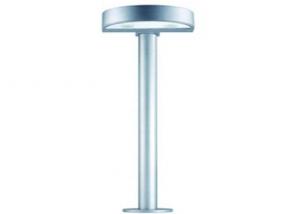Wind-Solar Hybrid LED Solar Light Street Lights
- Loading Port:
- Shanghai
- Payment Terms:
- TT OR LC
- Min Order Qty:
- 10 pc
- Supply Capability:
- 1000 pc/month
OKorder Service Pledge
Quality Product, Order Online Tracking, Timely Delivery
OKorder Financial Service
Credit Rating, Credit Services, Credit Purchasing
You Might Also Like
| 1. Discription: Wind-Solar Hybrid Street Lights | |||||
| 2. Characteristics: 20-80W 5-10M High 2000-7000 LM | |||||
| 3. Specification: | |||||
| Separate Parts: | |||||||||
 | 70w-80w led |
| PWM controller |  | 300w Hhigh-effective wind power generator (1.2 grade wind can start the wind generator ) | ||||
| American Bridgelux 3w/pc | 10%-100% 3 stages power energy-saving mode | ||||||||
| 110lm/w | |||||||||
| >80000 HRS | |||||||||
| Φ60mm | |||||||||
| IP65 | |||||||||
| Stretching Al | IP67 | ||||||||
| 5 years warranty | 3 years warranty | 3 years warranty | |||||||
 | Gel storage bat. |  | mono-crystalline solar panel |  | engineerning plastic box, anti-corrosion, waterproof high quality nuts,crews, gaskets & cables | ||||
| 2000 times deep recycle in -30 ℃ ~55 ℃ scope can normal work. | |||||||||
| Conversion efficiency: 18% | |||||||||
| CE&TUV | |||||||||
| 3 years warranty | 5 years warranty | ||||||||
 | Pole with arm, built-in fit and PV bracket | ||||||||
| Q235 hot-dip galvanized | |||||||||
| 3.5-4.0mm thickness | |||||||||
| coating as client's requirement | |||||||||
| corrosion protection | |||||||||
| 5 years warranty | |||||||||
- Q: Can solar lights be used for illuminating outdoor stairs or steps?
- Yes, solar lights can definitely be used for illuminating outdoor stairs or steps. Solar lights are a great option for providing illumination in outdoor spaces as they are easy to install, energy-efficient, and do not require any electrical wiring. By harnessing energy from the sun during the day, solar lights can automatically illuminate the stairs or steps at night, ensuring safety and visibility in these areas.
- Q: Are solar lights suitable for illuminating signs or billboards?
- Yes, solar lights are suitable for illuminating signs or billboards. They are energy-efficient, cost-effective, and environmentally friendly alternatives to traditional electricity-powered lighting options. Solar lights can provide sufficient illumination for signs or billboards, especially when strategically positioned to receive ample sunlight during the day for charging. Additionally, they offer the advantage of easy installation and low maintenance, making them a practical choice for outdoor advertising.
- Q: Can solar lights be used for tennis court lighting?
- Yes, solar lights can be used for tennis court lighting. Solar lights are a sustainable and energy-efficient solution that can provide ample lighting for tennis courts. However, it is important to ensure that the solar lights have sufficient brightness and coverage to meet the specific lighting requirements of a tennis court.
- Q: How do you choose the right solar panel size for solar lights?
- When choosing the right solar panel size for solar lights, it is important to consider the power requirements of the lights and the available sunlight in the area where they will be installed. Assess the wattage and operational hours of the lights, and then select a solar panel that can generate enough energy to meet these requirements. Additionally, ensure that the solar panel size is suitable for the space available for installation and can capture sufficient sunlight throughout the day for effective charging.
- Q: Can solar lights be used on fences?
- Solar lights are indeed suitable for use on fences and are quite commonly chosen for illuminating fences or providing decorative lighting in outdoor spaces. The design of solar lights allows them to be self-sustaining and depend on sunlight for their power source, making them a practical and energy-efficient choice. Installing solar lights on your fence can enhance visibility and safety during the night, create a cozy atmosphere in your outdoor area, and accentuate the aesthetic appeal of your fence. Moreover, solar lights are effortless to install since they do not necessitate any wiring or electrical connections, which makes them a convenient and trouble-free solution for fence lighting.
- Q: Can solar lights be used for outdoor religious ceremonies or events?
- Yes, solar lights can definitely be used for outdoor religious ceremonies or events. They are a great eco-friendly option that can provide ample lighting during nighttime gatherings. Solar lights are easy to install, require no electricity, and can be placed strategically to create a warm and inviting atmosphere. They can be used to illuminate pathways, decorate outdoor spaces, or highlight specific areas during religious ceremonies or events.
- Q: Can solar lights be used for outdoor parties or events?
- Yes, solar lights can be used for outdoor parties or events. They are a great eco-friendly option as they harness energy from the sun to power the lights, eliminating the need for electricity or batteries. Solar lights come in various designs and can provide a charming and ambient atmosphere for any outdoor gathering.
- Q: Do solar lights require any wiring?
- No, solar lights do not require any wiring as they operate solely on the energy generated from the sun.
- Q: What is the output power of solar lights?
- The output power of solar lights varies depending on the specific model and design. Typically, solar lights have power outputs ranging from a few watts to several hundred watts.
- Q: Are solar lights suitable for rural areas with no electricity?
- Yes, solar lights are highly suitable for rural areas with no electricity. They provide a reliable and efficient source of lighting, eliminating the need for expensive and environmentally harmful fuel-based alternatives like kerosene lamps. Solar lights are powered by the sun, making them sustainable and cost-effective in the long run. They can significantly improve the quality of life in rural communities by enhancing safety, productivity, and education opportunities, all while reducing energy poverty and promoting sustainable development.
Send your message to us
Wind-Solar Hybrid LED Solar Light Street Lights
- Loading Port:
- Shanghai
- Payment Terms:
- TT OR LC
- Min Order Qty:
- 10 pc
- Supply Capability:
- 1000 pc/month
OKorder Service Pledge
Quality Product, Order Online Tracking, Timely Delivery
OKorder Financial Service
Credit Rating, Credit Services, Credit Purchasing
Similar products
Hot products
Hot Searches
Related keywords





























